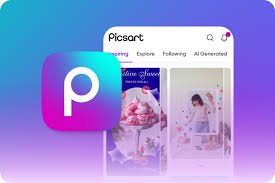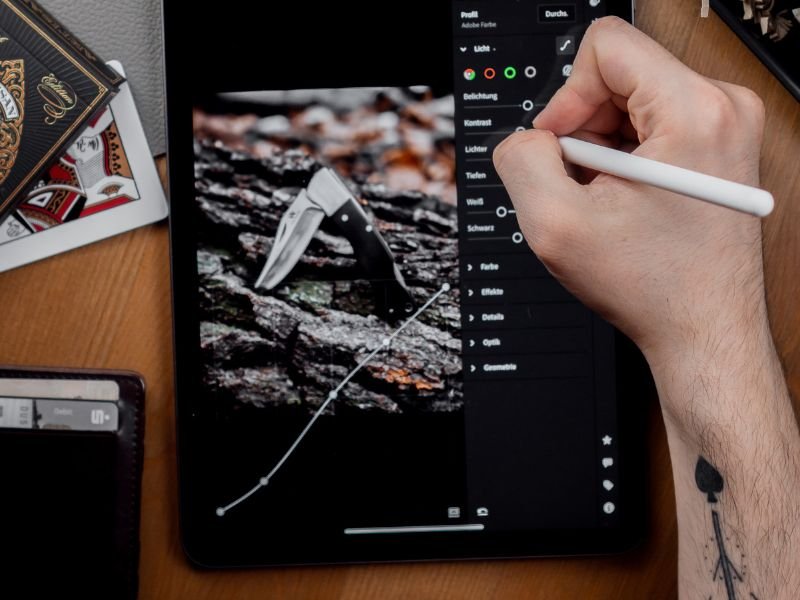Photo editing has changed from being a specialized ability to becoming a necessary tool for daily users, advertisers, and producers in the digital age. Artificial intelligence has made photo editing programs smarter, faster, and easier to use, so anyone can get professional-quality images with little work. AI-powered photo editing apps provide unmatched simplicity and creativity for anyone interested in improving their visual content, be they a professional photographer, social media enthusiast, or company owner.
The need for high-quality images has never been greater, and AI-powered apps are satisfying this demand by automating intricate editing tasks. From sophisticated color correction to automatic background removal, these apps use machine learning to analyze and improve images in a matter of seconds. But with so many options, how do you pick the best AI app for photo editing? This article examines the leading candidates, their unique features, and how they can revolutionize your workflow.
You will know exactly which AI photo editing tool best meets your demands at the end of this article. We’ll examine these apps’ distinctive features, price structures, sophisticated AI capabilities, and user-friendly interfaces. Regardless of your preferences for speed, accuracy, or artistic freedom, there is an AI-powered solution that can easily improve your images.
Understanding AI in Photo Editing
Artificial intelligence has fundamentally changed how we approach photo editing. Traditional editing software required manual adjustments, layers, and masks—a time-consuming process that demanded technical expertise. AI simplifies this by automating tasks such as object removal, skin retouching, and even generating entirely new elements within an image. Machine learning algorithms analyze thousands of images to understand lighting, composition, and aesthetics, allowing AI tools to make intelligent enhancements with a single click.
One of the most groundbreaking applications of AI in photo editing is its ability to restore old or damaged photos. Apps can now automatically repair scratches, adjust faded colors, and even reconstruct missing parts of an image. This is particularly valuable for archivists, historians, and individuals looking to preserve family memories. Additionally, AI-powered tools can upscale low-resolution images without losing quality, making them ideal for printing or digital displays.
Beyond restoration, AI excels in creative transformations. Features like style transfer allow users to apply the artistic techniques of famous painters to their photos, while AI-generated filters can adapt to the specific lighting and subject of an image for more natural results. The best AI photo editing apps combine these capabilities with an intuitive interface, ensuring that even beginners can achieve stunning edits without a steep learning curve.
The Role of AI in Mobile Photo Editing
Mobile photography has exploded in popularity, and AI-powered apps have played a significant role in this growth. Smartphones may not match DSLRs in hardware, but AI compensates by enhancing images computationally. Apps like Google Photos and Apple’s built-in editor use AI to optimize exposure, reduce noise, and even suggest crops. This makes it possible for casual users to capture and edit stunning photos without additional equipment.
One standout feature in mobile AI editing is real-time processing. Apps like Snapchat and Instagram apply filters and enhancements as you frame your shot, allowing for instant previews. AI also powers advanced mobile features like Night Mode, which combines multiple exposures to create bright, clear, low-light photos. Additionally, apps like FaceApp and Voilà AI Artist demonstrate how AI can transform selfies into cartoons, paintings, or even age-progressed versions with startling accuracy.
The convenience of mobile AI editing has made it a favorite among social media users and content creators. With just a few taps, anyone can achieve professional-looking results—no desktop or expensive software required. As smartphone cameras and AI algorithms improve, mobile editing will only become more powerful, further closing the gap between amateur and professional photography.
Key Features to Look for in an AI Photo-Editing App
When selecting the best AI app for photo editing, certain features set the top contenders apart. Automatic background removal is a must-have, enabling users to isolate subjects effortlessly for product photography, marketing materials, or social media content. Look for apps that offer precise edge detection and the ability to replace backgrounds with AI-generated scenes or custom images.
Another essential feature is AI-powered portrait enhancement. Tools that automatically smooth skin, brighten eyes, and adjust facial symmetry save hours of manual retouching. Some apps even offer virtual makeup applications, allowing users to experiment with different looks before finalizing their edits. For professional photographers, batch processing capabilities are crucial as they enable the editing of multiple photos simultaneously while maintaining consistency.
AI-driven color grading and lighting adjustments are also game-changers. Instead of manually tweaking shadows and highlights, AI can analyze an image and apply optimal settings based on its content. Some apps even suggest different editing styles based on trending aesthetics. Finally, consider apps that integrate cloud storage and collaboration features, making it easy to share and edit photos across devices and teams.
Top AI Photo-Editing Apps in 2025
1. Adobe Photoshop (AI-Powered)

The industry leader now integrates Generative AI (Firefly) for object removal, background changes, and realistic edits.
🔗 Download Here
2. Luminar Neo (Best for AI Creativity)
Skylum’s AI-driven editor offers Sky Replacement, Portrait Enhancements, and Relight AI for effortless pro edits.
🔗 Try Luminar Neo
3. Canva (an AI Photo Editor for Everyone)
Perfect for social media, Canva’s Magic Edit & Background Remover simplifies quick, high-quality edits.
🔗 Edit with Canva
4. PicsArt (Best AI Mobile Editor)

AI-powered Selfie Enhancer, Sketch Effects, and Object Removal make PicsArt a favorite for smartphone users.
🔗 Get PicsArt
5. Fotor (AI One-Click Enhancements)
Fotor’s AI Photo Enhancer, Retouch, and Background Changer deliver fast, stunning results.
🔗 Try Fotor
6. Remini (Best for Old Photo Restoration)
Uses AI to restore blurry, damaged, or low-res photos with shocking clarity.
🔗 Restore with Remini
7. Pixlr (Free AI-Powered Editor)
A lightweight alternative with AI Cutout, Auto-Fix, and Artistic Filters for quick edits.
🔗 Use Pixlr
8. Topaz Photo AI (Ultra HD Upscaling)
Perfect for photographers needing noise reduction, sharpening, and resolution boosts via AI.
🔗 Explore Topaz
9. YouCam Perfect (Selfie & Beauty AI)

Specializes in AI skin smoothing, makeup filters, and face retouching for flawless selfies.
🔗 Download YouCam
The Future of AI in Photo Editing
As AI technology continues to advance, photo editing apps will become even more sophisticated. We can expect real-time editing capabilities, where AI suggests adjustments as you shoot, and augmented reality integrations that allow for instant previews of edits. Additionally, AI may soon be able to generate entirely new images from text prompts, further blurring the line between photography and digital art.
Ethical considerations will also play a larger role as AI editing becomes more pervasive. Issues like deepfakes and unrealistic beauty standards have sparked debates about the responsible use of AI in photo manipulation. Developers will need to implement safeguards to prevent misuse while still providing powerful creative tools.
Ultimately, the best AI photo editing apps will be those that balance innovation with accessibility, offering cutting-edge features without overwhelming the user. As AI continues to evolve, so too will the possibilities for transforming ordinary photos into extraordinary works of art.
How AI Photo Editing Apps Compare to Traditional Software
The debate between AI-powered photo editing apps and traditional software like Adobe Photoshop or Lightroom is ongoing. While classic tools offer granular control, AI apps provide speed and automation that cater to modern demands. Traditional software requires users to manually adjust sliders, apply masks, and fine-tune layers—a process that can take hours for complex edits. AI, on the other hand, automates these tasks with remarkable precision, drastically reducing editing time.
One of the biggest advantages of AI apps is their ability to learn and adapt. Unlike static filters in traditional software, AI algorithms analyze each image individually, making context-aware adjustments. For example, an AI app can detect a portrait and automatically apply skin smoothing, teeth whitening, and eye enhancement without user input. Meanwhile, traditional software would require separate adjustments for each element. However, professionals still prefer manual control for high-end retouching, where AI may sometimes over-process details.
Despite their differences, AI and traditional software are not mutually exclusive. Many professionals now use a hybrid approach—starting with AI for quick fixes and finishing with manual tweaks for perfection. Adobe has even integrated AI tools like Neural Filters and Content-Aware Fill into Photoshop, bridging the gap between automation and precision. As AI continues to improve, the line between these two approaches will blur further, offering users the best of both worlds.
Ethical Considerations in AI Photo Editing
While AI photo editing offers incredible possibilities, it also raises important ethical questions. The ease of altering images has led to concerns about misinformation and unrealistic beauty standards. Deepfake technology, which uses AI to create hyper-realistic but fake images or videos, poses risks for fraud and propaganda. Even less extreme edits, like flawless skin or perfect body proportions, can contribute to unhealthy self-image issues, particularly among young users.
Another concern is copyright and ownership. AI tools that generate or modify images using existing artwork or photos can blur the lines of intellectual property. Some AI models are trained on vast datasets of images scraped from the internet, often without the creators’ consent. This has sparked debates about whether AI-generated art is original or derivative and who should profit from it.
To address these issues, developers and policymakers must establish guidelines for responsible AI use. Some apps now include watermarks or metadata to indicate AI-altered content, while others limit certain features to prevent misuse. As users, it’s important to be mindful of how we edit and share images, ensuring that AI enhances creativity without compromising authenticity or ethics.
AI Photo Editing for Businesses and Marketers
Businesses of all sizes are leveraging AI photo editing to enhance their visual branding. E-commerce platforms, for instance, rely on AI to automate product photo editing—removing backgrounds, adjusting colors, and even generating lifestyle scenes. This saves time and resources while maintaining a consistent, professional look across thousands of images. AI tools like Canva and Crello also offer templates and branding features, making it easy for small businesses to create polished marketing materials without a design team.
Social media marketers benefit greatly from AI’s speed and scalability. Apps like CapCut and InShot use AI to suggest video cuts, transitions, and even captions, streamlining content creation. AI-powered analytics can also predict which edits or filters perform best with specific audiences, allowing marketers to optimize their visuals for engagement. For influencers and personal brands, AI tools provide quick yet high-quality edits that keep their feeds visually cohesive.
The future of AI in business visuals is leaning toward personalization. Imagine an e-commerce site that uses AI to customize product images based on a user’s browsing history or a restaurant that generates unique menu visuals for each customer. As AI becomes more integrated with other technologies like AR and VR, the possibilities for immersive and interactive visuals will expand exponentially.
Free vs. Paid AI Photo Editing Apps
The market offers a wide range of AI photo editing apps, from free versions with basic features to premium subscriptions with advanced tools. Free apps like Fotor and BeFunky are great for casual users, offering simple AI enhancements like auto-enhance, background removal, and basic filters. However, they often include watermarks or limit exports unless you upgrade.
Paid apps like Adobe Photoshop and Luminar Neo provide more sophisticated AI features, such as generative fill, advanced portrait retouching, and batch processing. These are ideal for professionals who need precision and reliability. Mid-tier options like Pixelmator Pro or Affinity Photo offer a balance, with powerful AI tools at a one-time purchase price instead of a subscription.
When choosing between free and paid apps, consider your needs. If you edit photos occasionally, a free app may suffice. But for frequent use or professional work, investing in a paid app can save time and deliver superior results. Many paid apps also offer free trials, allowing you to test their AI capabilities before committing.
Tips for Getting the Most Out of AI Photo Editing Apps
To maximize the potential of AI photo editing apps, start by understanding their core features. Experiment with automatic enhancements first, then explore manual adjustments to fine-tune the results. For example, after using AI skin smoothing, you might manually adjust the opacity to retain natural textures. Learning keyboard shortcuts or gesture controls can also speed up your workflow.
Another tip is to use presets or custom templates. Many AI apps allow you to save your favorite edits as presets, which you can apply to future photos with one click. This is especially useful for maintaining a consistent style across social media posts or product images. Additionally, explore third-party plugins or integrations—some AI tools work seamlessly with platforms like Lightroom or Photoshop, extending their functionality.
Finally, stay updated. AI photo editing evolves rapidly, with new features and improvements released regularly. Follow app blogs, join user communities, or watch tutorials to discover hidden tricks and stay ahead of trends. The more you explore, the more you’ll unlock the full potential of these powerful tools.
The Best AI App for Photo Editing: Final Recommendations
After exploring the capabilities, ethics, and applications of AI photo editing, here are our top recommendations based on different needs:
- For Professionals: Adobe Photoshop with Firefly AI offers unmatched control and generative AI tools.
- For Photographers: Luminar Neo excels in AI-powered lighting and composition adjustments.
- For Mobile Users: PicsArt and Remini provide powerful, on-the-go editing with creative AI filters.
- For Businesses: Canva and Fotor are perfect for quick, branded visuals with AI assistance.
- For Beginners: BeFunky or Google Photos offer simple, automated enhancements.
No single app is the “best” for everyone—it depends on your goals, budget, and skill level. The key is to experiment and find the tool that aligns with your creative vision.
Conclusion
AI has undeniably transformed photo editing, making it faster, smarter, and more accessible than ever before. From automating tedious tasks to enabling creative possibilities that were once unimaginable, AI-powered apps cater to everyone—from casual smartphone users to professional photographers. The best part? You don’t need technical expertise to achieve stunning results; the AI does the heavy lifting for you.
However, with great power comes responsibility. As AI editing becomes more advanced, it’s crucial to use these tools ethically—whether by avoiding misleading alterations or respecting copyright boundaries. The future of AI in photo editing is bright, with innovations like real-time enhancements and generative art pushing the boundaries of visual storytelling.
Ultimately, the best AI photo editing app is the one that empowers you to create effortlessly while aligning with your needs. Whether you choose a free mobile app or a premium desktop solution, embracing AI can elevate your photos from ordinary to extraordinary. The only limit is your imagination.






